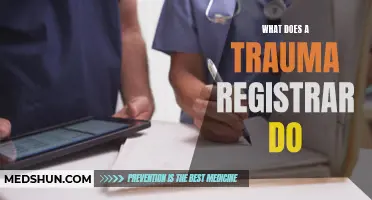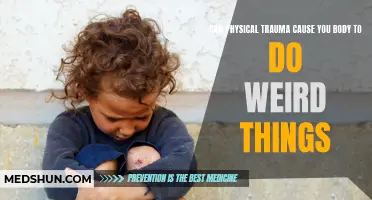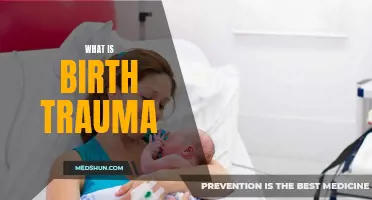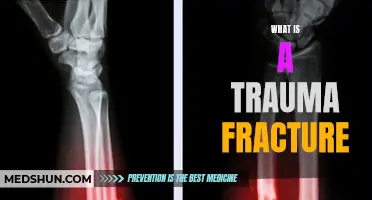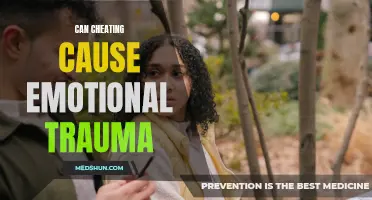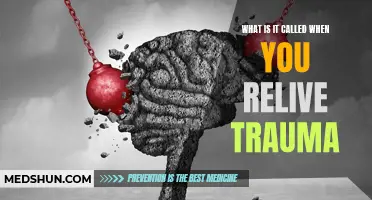
Have you ever wondered if a cat's eyes are as fragile as they look? Well, it turns out that eye trauma in cats is actually a serious concern that can sometimes be life-threatening. From scratches and punctures to foreign objects and infections, there are a variety of ways that a cat's eyes can be injured. In this article, we will explore the potential dangers of eye trauma for our feline friends and uncover the factors that could ultimately lead to their demise. So buckle up, and let's delve into the mysterious world of cat eye trauma.
What You'll Learn

Types of Eye Trauma in Cats
Eye trauma in cats can be caused by a variety of factors, and if left untreated, it can lead to serious complications or even death. It is crucial for cat owners to be aware of the different types of eye trauma that can occur in cats and to seek immediate veterinary attention if their cat shows any signs of eye injury. In this article, we will explore several common types of eye trauma in cats.
- Corneal ulcers: Corneal ulcers are among the most common types of eye trauma in cats. They are characterized by a loss of the outer layer of the cornea, which can result from scratches, foreign objects, or infections. Cats with corneal ulcers often display symptoms such as squinting, excessive tearing, redness, and a cloudy or hazy appearance to the eye. If left untreated, corneal ulcers can become infected and lead to more serious complications.
- Eyelid lacerations: Eyelid lacerations occur when the eyelid is cut or torn, often as a result of a sharp object or trauma. It is crucial to seek veterinary attention for eyelid lacerations as soon as possible, as they can lead to additional damage to the eye or even the loss of the eye if not treated promptly. Signs of eyelid lacerations may include bleeding, swelling, or changes in the shape of the eyelid.
- Orbital fractures: Orbital fractures are fractures of the bones surrounding the eye, and they can occur as a result of a blunt force trauma or a severe injury. Cats with orbital fractures may exhibit symptoms such as swelling, bruising, or bulging of the eye. It is essential to seek immediate veterinary care for orbital fractures as they can often cause damage to the surrounding structures and may require surgical intervention.
- Traumatic cataracts: Traumatic cataracts are a type of eye trauma that causes clouding or opacity of the lens. They can develop after a severe injury to the eye or as a result of another eye condition such as a corneal ulcer or glaucoma. Cats with traumatic cataracts may display symptoms such as a change in the color or clarity of the eye, vision loss, or increased sensitivity to light. Treatment for traumatic cataracts may involve surgical removal of the lens or other interventions depending on the severity of the cataract.
- Proptosis: Proptosis occurs when the eyeball is displaced from its normal position and protrudes from the eye socket. It is commonly caused by trauma, such as being hit by a car or a blunt object. Proptosis is a medical emergency and requires immediate veterinary attention. Signs of proptosis may include a bulging or swollen eye, difficulty closing the eyelids, and vision loss. Without prompt treatment, proptosis can lead to severe complications, including the loss of the eye.
In conclusion, eye trauma in cats can have serious consequences if not treated promptly. It is important for cat owners to be aware of the different types of eye trauma that can occur and to seek veterinary attention if their cat shows any signs of eye injury. Early intervention can often prevent complications, preserve vision, and save the life of your feline friend.
Unlocking Healing: A Guide to Microdosing Mushrooms for Trauma Relief
You may want to see also

Common Signs and Symptoms of Eye Trauma in Cats
Cats are curious creatures, and their inquisitive nature can sometimes lead to accidents and injuries. Eye trauma is one such injury that can cause serious complications if left untreated. It is essential for cat owners to be vigilant and aware of the common signs and symptoms of eye trauma in cats, as early intervention can improve the chances of a successful recovery. In this article, we will discuss some of the common signs and symptoms of eye trauma in cats.
- Swelling and redness: One of the first signs of eye trauma in cats is swelling and redness in and around the eye. The affected eye may appear puffy and inflamed. It is essential to examine your cat's eyes regularly to detect any changes in size or color.
- Discharge: Another common symptom of eye trauma is the presence of discharge from the affected eye. The discharge may appear watery, mucous-like, or even bloody. Excessive tearing or watering of the eye is also a cause for concern.
- Changes in the appearance of the eye: Eye trauma can cause visible changes in the appearance of the affected eye. The eye may appear cloudy, hazy, or even opaque. In some cases, there may be a visible scratch or abrasion on the surface of the eye.
- Squinting or keeping the eye closed: Cats may squint or keep the affected eye closed to protect it from further damage. If you notice your cat frequently squinting or avoiding light, it is a sign that something is wrong. Cats have a natural instinct to hide pain, so be observant and look for any changes in their behavior.
- Changes in behavior: Eye trauma can cause discomfort and pain, which may lead to changes in your cat's behavior. They may become more agitated, irritable, or even aggressive. If your usually friendly and affectionate cat suddenly starts to exhibit these behaviors, it is worth investigating further.
- Rubbing or pawing at the eye: Cats often try to alleviate discomfort by rubbing or pawing at the affected eye. While this may provide temporary relief, it can also exacerbate the injury or introduce infection. If you notice your cat repeatedly rubbing or pawing at their eye, it is crucial to seek veterinary attention.
If you observe any of these signs and symptoms in your cat, it is essential to contact your veterinarian immediately. Prompt intervention can help prevent complications and improve the chances of a successful recovery. When seeking veterinary care, provide a detailed history of the symptoms you have observed, as well as any recent incidents or accidents that may have caused the eye trauma.
In conclusion, eye trauma is a serious condition that requires immediate attention. By being vigilant and aware of the common signs and symptoms of eye trauma in cats, you can help ensure early detection and intervention. Remember, early treatment can make a significant difference in your cat's overall health and well-being.
Is it Permitted to Bring Trauma Shears on a Plane? Know Before You Fly
You may want to see also

Potential Risks and Complications of Untreated Eye Trauma
Eye trauma in cats can be caused by various factors such as accidents, fights with other animals, or foreign objects getting in their eyes. While some cases of eye trauma may only result in minor injuries, it is crucial to recognize the potential risks and complications that can arise if left untreated. Prompt veterinary attention is necessary to prevent further damage and protect your cat's vision.
One of the potential risks of untreated eye trauma is infection. When the eye is injured, it becomes vulnerable to bacterial or fungal infections. The moist environment of the eye provides an ideal breeding ground for these microorganisms, which can lead to significant damage if left unchecked. An untreated infection can spread rapidly, causing severe discomfort, pain, and even permanent loss of vision.
Corneal ulcers are another complication that can arise from untreated eye trauma. The cornea, the transparent outer layer of the eye, is susceptible to abrasions or cuts. These wounds can lead to corneal ulcers, which are open sores on the surface of the eye. Corneal ulcers are not only painful but can also cause a cloudy appearance in the eye, and if not treated promptly, they can result in scarring or perforation of the cornea.
Glaucoma is a potentially serious consequence of untreated eye trauma. When the eye is injured, it can disrupt the normal fluid drainage system of the eye, leading to increased intraocular pressure. This increased pressure can damage the optic nerve, which is vital for vision. If left untreated, glaucoma can cause irreversible vision loss. Symptoms of glaucoma may include a bulging eye, redness, pain, and increased tearing.
Furthermore, untreated eye trauma can result in a condition called uveitis, which is the inflammation of the middle layer of the eye. Uveitis can cause pain, redness, cloudiness, and changes in the color of the iris. In severe cases, it can lead to secondary complications such as cataracts, retinal detachment, or even loss of the eye.
In some instances, eye trauma can also lead to traumatic cataracts. Traumatic cataracts occur when the lens of the eye becomes clouded or opaque following an injury. This can significantly impair your cat's vision and may require surgical intervention to remove the cataract and restore vision.
In summary, untreated eye trauma in cats can have serious consequences. Infection, corneal ulcers, glaucoma, uveitis, and traumatic cataracts are potential risks that can lead to pain, discomfort, and permanent vision loss. It is crucial to seek immediate veterinary attention if your cat experiences any form of eye trauma to ensure proper diagnosis and treatment. Prompt intervention can help prevent complications and preserve your cat's vision and overall well-being.
Understanding the Process of Emotional Healing
You may want to see also

Treatment Options for Cats with Eye Trauma
Eye trauma is a serious condition that can affect cats, and if left untreated, it can lead to vision loss and even death. If your cat has suffered an eye injury, it is crucial to seek immediate veterinary attention. In this article, we will discuss the treatment options available for cats with eye trauma.
- Examination and Evaluation: The first step in treating a cat with eye trauma is a thorough examination by a veterinarian. The vet will assess the extent of the injury, determine the underlying cause, and check for any other associated injuries.
- Medications: Depending on the severity of the eye trauma, your veterinarian may prescribe various medications to address the specific issues. Antibiotics are often prescribed to prevent infection, while pain relief medication can help alleviate discomfort. Other medications, such as anti-inflammatory drugs or corticosteroids, may be used to reduce inflammation and promote healing.
- Wound Management: If there is a laceration or an open wound, the veterinarian will clean the area to prevent infection and may suture the wound if necessary. Special care will be taken to avoid any additional trauma to the eye.
- Treatment of Corneal Ulcers: Corneal ulcers, which are common in eye trauma cases, require specific attention. The vet may prescribe topical medications, such as antibiotic eye drops or ointments, to prevent infection and promote healing. In severe cases, a protective contact lens or even surgery may be necessary.
- Surgical Interventions: In some instances, surgical intervention may be required for more severe eye trauma. This can involve removing foreign objects, repairing the cornea, or even removing the entire eye if it is irreparably damaged or causing severe pain or infection.
- Follow-up Care: Once the initial treatment is complete, follow-up care is crucial to monitor the healing progress and ensure that any potential complications or infections are addressed promptly. Your veterinarian may schedule several follow-up appointments to evaluate the eye's condition and adjust the treatment plan if necessary.
- Prevention and Environmental Modifications: After the treatment, it is essential to prevent further eye trauma. This can involve keeping your cat indoors to avoid accidents or providing protective eyewear if recommended by your veterinarian. Additionally, removing any hazards from the cat's environment, such as sharp objects or toxic substances, can reduce the risk of future eye injuries.
In conclusion, timely and appropriate treatment is vital in managing eye trauma in cats. Seeking veterinary attention promptly is crucial to prevent vision loss and potential complications. Remember, only a professional veterinarian can properly evaluate and determine the best treatment options for your cat's specific condition.
Supporting Loved Ones Through Trauma: A Guide to Providing Compassionate Care
You may want to see also
Frequently asked questions
Yes, in severe cases of eye trauma, such as a puncture wound or severe infection, a cat can die if not treated promptly.
Some signs of eye trauma in cats include redness, swelling, discharge, squinting, cloudiness, or a change in the shape or size of the eye.
The treatment for eye trauma in cats depends on the severity of the injury. It may involve antibiotics, pain medication, and surgical intervention if necessary. In some cases, the eye may need to be removed to prevent further complications.


